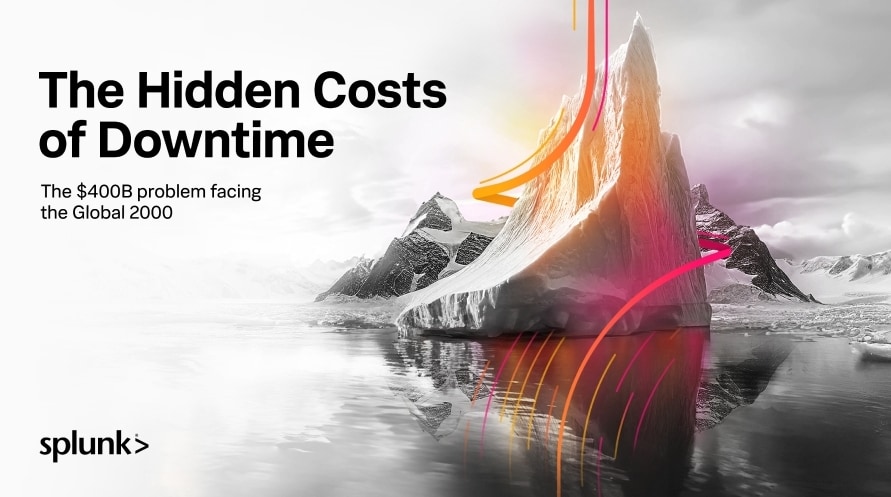What Is Splunk & What Does It Do? A Splunk Intro

Hello, we’re Splunk, and we’re glad you’re visiting us today. (And just maybe, you're visiting because of some big news: Splunk has officially joined Cisco. Indeed, we are so excited for this opportunity.)
Honestly , we hear from people far and wide about “What does Splunk do?”, “Does the name Splunk mean something?” And of course, “How can I learn Splunk?”
I wrote this article to help answer all these questions and point you in the right direction. First things first — Splunk formally refers to our organization. Less formally, though, you might hear about Splunk in reference to our products, services, and other offerings. Employees at Splunk are known as Splunkers. Importantly, the coolest part about Splunk is probably the global community of people who use and rely on our solutions in their workplaces.
We’ll get into all this and more in the following article. Thanks for reading!
New to Splunk? Start Here!
Explore our Products
Take a Free Trial
Learn the Basics
- Splunk Tutorial: Getting Started Using Splunk
- Splunk Cheat Sheet: Query, SPL, RegEx, & Commands
- Splunk Universal Forwarder
- Splexicon (Splunk Glossary)
- Splunk Lantern (Customer Success Center)
- Splunk Docs
Get Data Into Splunk
What does Splunk do?
So, let’s start with the first question: what does Splunk do?
As simply as possible, we offer a big data platform that can help you do a lot of things better. Using Splunk the right way powers cybersecurity, observability, network operations and a whole bunch of important tasks that large organizations require.
Splunk is the key to enterprise resilience. Put simply, that means organizations who use Splunk can tackle digital disruptions a whole lot differently. Whether you need comprehensive visibility, rapid detection and investigation, optimized data and resources — or all three! — Splunk solutions have you covered.
As our formal introduction explains:
Our purpose is to build a safer and more resilient digital world. Every day, we live this purpose by helping SecOps, ITOps, and engineering teams keep their organizations securely up and running.
To that end, Splunk offers a whole suite of various software, apps and APIs, plus a whole lot of flexibility for your future needs. Our solutions help organizations mature your digital resilience, so you can adapt to anything. The most-well known Splunk products include:
- Splunk Enterprise and Splunk Cloud Platform let you search, analyze, and visualize all of your data, providing insights you can act on in real time. Both cloud and on-prem options are available.
- Our Universal Forwarder is the most popular way of getting data into Splunk, though, to be clear there are many ways to get data into Splunk.
- Splunk Enterprise Security is our industry-leading SIEM that helps you do all sorts of things, including security monitoring, incident response and management, compliance, and threat hunting. This SIEM ensures a modern approach to everything in your SOC.
- Splunk Observability Cloud is a full-stack, OpenTelemetry-native platform that provides end-to-end visibility into applications and infrastructure. This means faster incident resolution and improved performance.
- Splunk AppDynamics is an application performance monitoring (APM) platform that helps you understand and optimize how hybrid and on-premises apps perform. Features here include business performance monitoring, digital experience monitoring, and application security.
Check out this video to get a sense of what Splunk can do for you:
Now let’s zoom out.
What does Splunk mean?
Spelunking is the hobby of exploring caves and mines. Splunking, then, is the exploration of information caves and the mining of data. Splunk helps you explore things that aren’t easy to get to otherwise, like log data and messages and machine data.
Removing these data barriers uncovers tons of meaning and actionable steps organizations. That’s why you’ll hear us talk about Splunkers (our employees and community) or the idea of Splunking around. Importantly, it’s not only the capabilities that we offer — the real exciting stuff is all the things you can do with those capabilities.

So, the short answer to what Splunk can do might just be: all kinds of stuff! Here’s a few starting points:
- Monitor, search through, index and correlate data from a variety of sources.
- Easily search and analyze big data and set up relevant alerts, reports and visualizations.
- Power your cybersecurity operations, from incident response and management to threat detection and threat hunting.
- Make compliance and reporting a breeze.
- Get full visibility into your IT and business operations.
Essentially, any area where you’ve got lots and lots of data, Splunk can help.
Splunk offers a single place to understand how your organization is working — and more importantly — where it is not working. Ultimately Splunk is only limited by your creativity! Check out some unique ways people have used Splunk:
- Threat hunting with the PEAK Framework
- Finding the perfect surf spot
- Brewing better beer
- Helping puppies grow into healthy dogs
- Caring for bees and their harvests
Brief history of Splunk
And here’s some more of our story: Splunk was founded in the early 2000s by Eric Swan, Rob Das and Michael Baum. Inspired by cave spelunking, they sought a way to better see into all the siloed information caves typical of most organizations.
Seeing that “everything” makes data, the team sought a way to extract value from that. The technology centered around a powerful search engine that scanned and stored log files within system infrastructure. We’ve grown a lot since those early days:
Founded in 2003, Splunk is a global company — with over 7,500 employees, Splunkers have received over 1,020 patents to date and availability in 21 regions around the world.
Today, we know that building resilience is a team effort. That’s why, over the years, we have acquired a few companies and merged their technologies into our solutions, providing more teams a way to get everything they need in one place.
2023 was a big year here at Splunk. In October, we celebrated our 20th anniversary. And we announced our intent to join forces with Cisco, which we did officially on March 18, 2024.
Quick facts about Splunk
Our claims to fame. We’re known for being a company where people want to work. Long-time users know all about our .conf extravaganza (returning to Boston in September 2025), Buttercup the Pwny 🐴, and our very own t-shirt store.
Cutting-edge research. All of our teams do incredible work, including SURGe and the Splunk Threat Research Team, who focus on different areas of security, threat research and organizational guidance. Of course, we also survey and issue industry reports like:
True partnerships. A whole bunch of world-class companies use Splunk technologies. Cal Poly is training future cybersecurity leaders, McLaren drives data on the racetrack and Heineken pours data-driven quality into everything they do. Check out more customer stories.
More than you expect. Splunk is not a single product or service, but our company name, our dedication to our customers, and our singular focus on helping you do what you do better.
How to learn Splunk
The first thing to know about using Splunk is that we have our own query language, Search Processing Language — SPL for short. In fact, we now have SPL2, a newer version. See the differences between SPL and SPL2.
Learning Splunk does take some time and effort, but once you know it, the possibilities are endless. To help you in this, you can…
- Take a course from our library of Splunk Training & Certifications, including a variety of free courses, like What is Splunk, Using Fields and Intro to Dashboards.
- Explore beginner level Splunk Tutorials.
- Easily get commands with our Splunk Cheat Sheet.
What Splunk can help you do
Hopefully this article gives you a little sense of all the things Splunk — and the Splunk community — can help you achieve. And, as the saying goes, happy Splunking! Want to learn more? Get in touch!
See an error or have a suggestion? Please let us know by emailing splunkblogs@cisco.com.
This posting does not necessarily represent Splunk's position, strategies or opinion.
Related Articles
About Splunk
The world’s leading organizations rely on Splunk, a Cisco company, to continuously strengthen digital resilience with our unified security and observability platform, powered by industry-leading AI.
Our customers trust Splunk’s award-winning security and observability solutions to secure and improve the reliability of their complex digital environments, at any scale.




